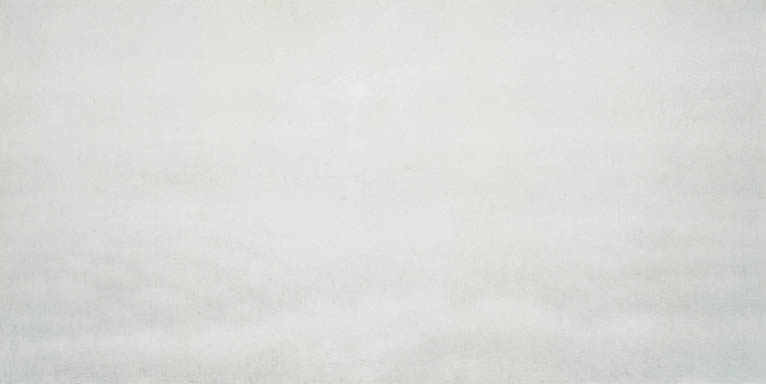QIU SHIHUA
| April 1, 2010 | Post In LEAP 2

For the past decade or so, Qiu Shihua has been painting beige canvases. His paintings are mostly large, usually more than a meter in height and width and covered in several washes of a natural flax color so neutral that it absorbs the warmth and tone of whatever light is shone upon them. Sometimes swaths of white (evoking cloud) or gray (evoking land) pass across the surface of the canvases, invisible to all but the most conscientious viewer. Other than that, there is little differentiation between the works. If you look at a few at a time, the most salient difference that comes to mind is the varying weave and consistency of the supports themselves, some thick and rough like hemp, others as fine and even as cotton.
Qiu Shihua didn’t start off painting this way. Of the artists most frequently invoked in discussions of “contemporary Chinese art” (he is included in collector Uli Sigg’s canon-making “Mahjong” show, for example), he falls far to the older end of the spectrum. Born in 1940, he did not travel the trajectories that inform the career contexts of his peers: he graduated from the Xi’an Academy of Arts in 1962, trained in the Russian socialist realist style of oil painting that began dominating the nation’s art education in the mid-1950s. He went on to experience the full thrust of the Cultural Revolution’s aesthetic program when he worked as a poster painter in Shaanxi. Qiu began painting landscapes during the 1970s and 1980s, but it was only after a return to the academy in 1984 and travels abroad later in the decade that his style began morphing into the reflective, Tao-inspired gambit for which he is known today.
Painted between 1995 and 2008, the six paintings shown here betray no major change in style across a wide swath of years. According to art historian Martina Koeppel-Yang, Qiu Shihua’s paintings are attempts “to capture that … point of momentary concentration before it assumes a form,” pregnant with substance but not with subjects. They are non-representative, styled after points of mental, physical and visual equilibrium; in this sense they are abstract. And yet it is equally possible to discuss them as landscapes. Critics, grasping for a socio-political peg to a resolutely silent body of work, have invoked the overwhelming monotony of landscapes in northwestern China, where Qiu lived for over twenty years. They may even mention wide horizons and overcast skies, or the yellow loess so distinct to the region and, perhaps plausibly, symbolic of both China’s ancient unity under the first Qin emperor and the Communist heritage of the Yan’an years. But the paintings are not articulate on these matters, nor on any others. Perhaps there is a reason Qiu’s paintings go untitled, taking pleasure in their serene occupation of spaces between abstraction and landscape, context and vacuum. Angie Baecker

